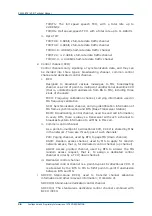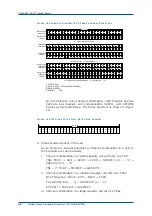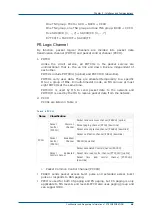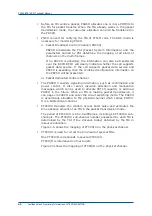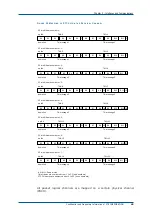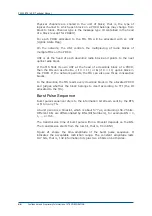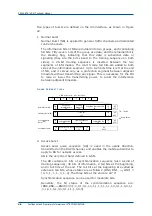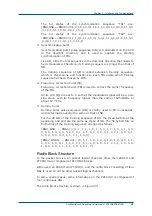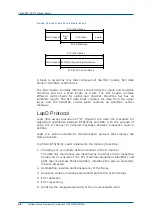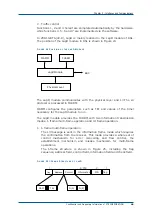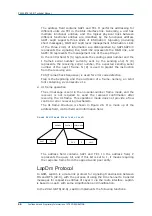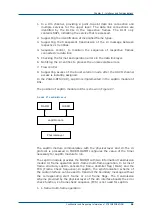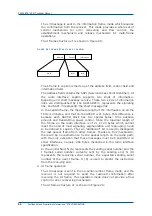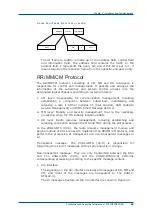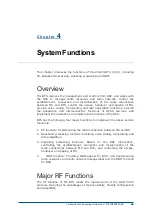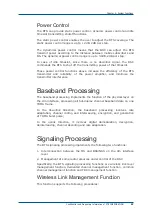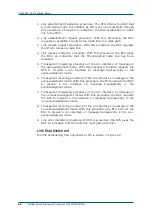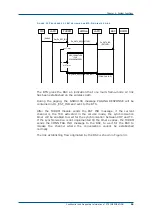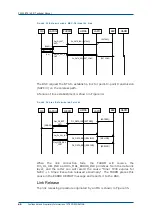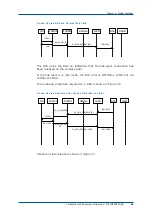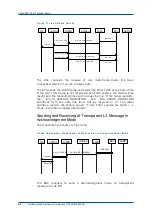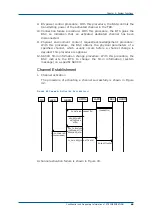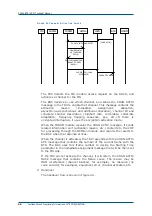
ZXG10-BTS (V2.9) Technical Manual
52
Confidential and Proprietary Information of ZTE CORPORATION
The L3 message is sent in the information frame mode which requires
the confirmation from the receiver. This mode provides a whole set of
control mechanism for error recovering and flow control, the
establishment mechanism and release mechanism for multi-frame
operations.
The I frame structure of is shown in Figure 28.
F
I G U R E
2 8
I -
F R A M E
S
T R U C T U R E O F
L
A P
D
M
Address
Control
Information
SAPI
N(S)
N(R)
The I-frame in LapDm is made up of the address field, control field and
information field.
The address field contains the SAPI (Service Access Point Identifier). At
the radio interface, LapDm supports two kinds of information:
Signaling and short message service. These two kinds of information
links are distinguished by the SAPI.SAPI=0 represents the signaling
link, and SAPI=3 represents the short message link.
In the LapDm frame, the maximum length of the information on all the
TCHs is 23 bytes, and that on the SACCH is 21 bytes. This difference is
because each SACCH block has two special bytes: Time advance
amount and transmitting power control. Since the maximal length of
the frame on the radio interface is of 21 or 23 bytes which cannot
meet the need of most signaling, segmentation and regrouping need
to be defined in LapDm. Thus an “additional” bit is used to distinguish
the last packet frame from other frames. Thanks to this mechanism,
there will be no restriction to fix the packet length on the radio path,
with the only exception that these messages must be transmitted on
other interfaces, namely, 260 bytes mentioned in the radio interface
specification.
In the control field, N (S) represents the sending serial number and the
I frame’s serial number currently sent by the sending end; N (R)
represents the receiving serial number, the expected sending serial
number of the next I frame. N (R) is used to predict the instruction
from the receiving end.
2. UI frame operation
The L3 message is sent in the no-serial-number frame mode, and the
receiver is not required to send the received confirmation after
receiving the UI frame. This operation mode does not provide a flow
control or error recovering mechanism.
The UI frame structure of is shown in Figure 29:
Summary of Contents for ZXG10-BTS
Page 4: ...This page is intentionally blank ...
Page 8: ...Figures 121 Tables 123 ...
Page 9: ...This page is intentionally blank ...
Page 10: ......

